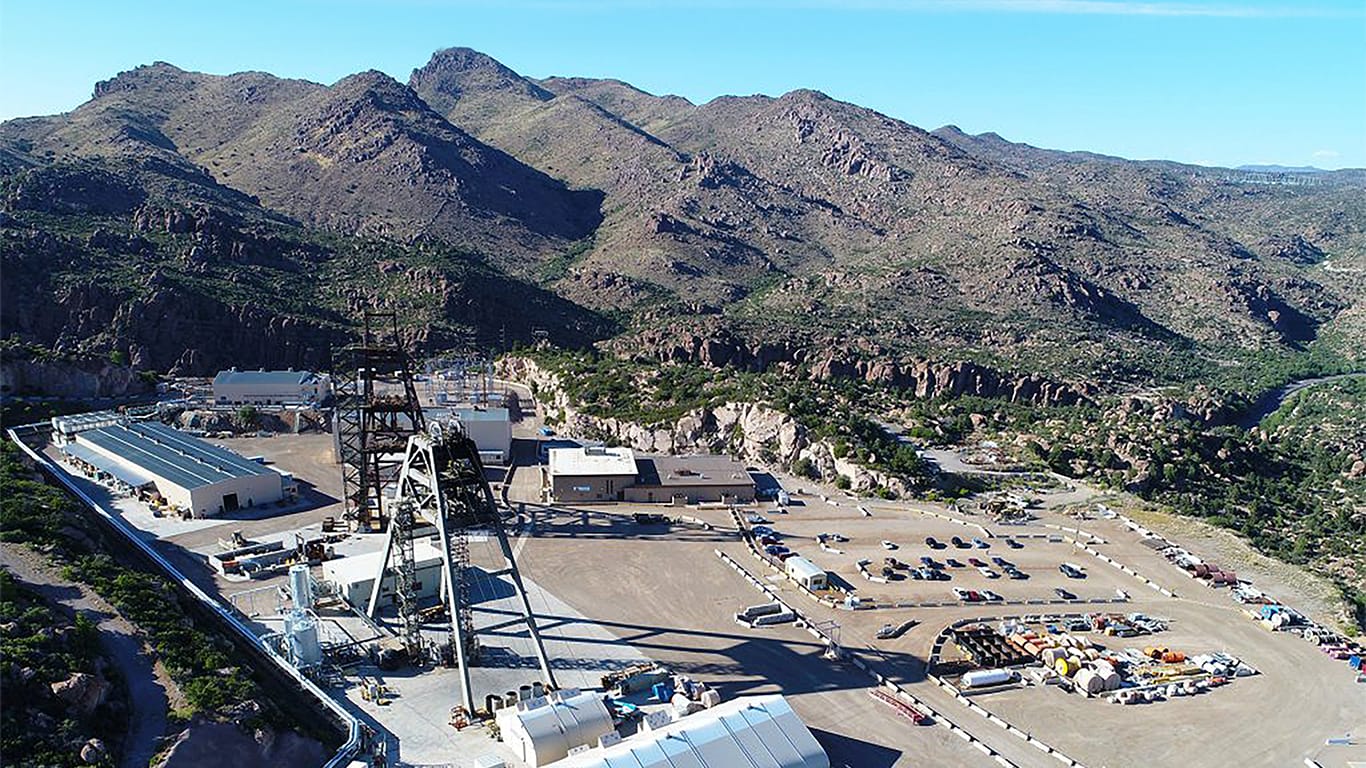It’s a busy and exciting time for Resolution Copper as the mining organization continues its partnership with Rio Tinto and BHP to progress the proposed underground mine near Superior. This project represents one of the most significant untapped copper deposits today with 1.787 billion metric tonnes at an average grade of 1.5% copper and the potential to supply close to 25% of U.S. copper demand.
Tyson Nansel, principal advisor communications for Resolution Copper, shares more about the Superior project, as well as other exciting updates about the company and its recent news and accomplishments.
MORE NEWS: Here are the Most Influential Women in Arizona Business for 2024
Az Business: Can you provide an update on the current status of the Resolution Copper project and any major milestones achieved recently?
Tyson Nansel: The Resolution Copper project is currently in the permitting phase, with a focus on addressing regulatory requirements and environmental considerations as outlined in the federal review process under the National Environmental Policy Act (NEPA). This includes comprehensive assessments of environmental and social impacts, with extensive stakeholder engagement.
Resolution Copper has made significant progress in 2024. We were honored to receive the Rocky Mountain Mining Institute’s Safety Award for Small Underground Mines for the second consecutive year, recognizing our commitment to workplace safety. Additionally, we formalized a landmark Good Neighbor Agreement with local communities and stakeholders, setting a foundation for ongoing collaboration and responsible development.
These milestones highlight our focus on safety, sustainability and community partnership as we advance the project.
The project continues to await final permitting decisions, and the team remains actively engaged with stakeholders to address any concerns and ensure the project aligns with sustainability goals and community values. This ongoing dialogue is key to developing a project that responsibly contributes to the global copper supply, essential for renewable energy technologies and infrastructure.
AB: You mention working with local communities. How do you help address concerns and incorporate public feedback into your sustainability and operational plans?
TN: Resolution Copper actively collaborates with local communities and Indigenous groups to address concerns, preserve cultural heritage and integrate feedback into its sustainability and operational plans.
Resolution Copper has established a Tribal Monitor Program involving members from eight Native American Tribes. These monitors have worked on-site for over four years to identify culturally significant areas. Their findings have directly influenced project plans, leading to substantial changes to the geographic footprint to protect culturally significant sites such as Apache Leap.
We work closely with local communities to develop agreements that address their priorities and concerns. For instance, the Good Neighbor Agreement reflects shared commitments to transparency, collaboration, and investment in community well-being. These agreements guide our partnerships and ensure accountability in our operations.
Resolution Copper has hosted hundreds of meetings and engaged in thousands of documented consultations with Native American Tribes, local residents, and other stakeholders. Through these efforts, community feedback has shaped several aspects of the project, including enhanced environmental protections, water management strategies, and cultural heritage preservation measures.
AB: With Arizona’s ongoing water resource challenges, how is Resolution Copper addressing water usage and conservation in its mining operations?
TN: Once in operation, the [new] mine could supply up to one-quarter of the nation’s copper demand, providing a vital resource for America’s clean energy transformation. We take water conservation very seriously. We’re committed to transparency and constant improvement when it comes to water use, seeking ways to implement state-of-the-art technology to help further minimize our water needs in the long term.
Resolution Copper will be the most water-efficient mine in Arizona — using fewer gallons of water per pound of copper produced than any other mine operating in Arizona. That means every drop of water used at Resolution Copper goes further than water used in other copper mines and brings more benefits to the region.
At maximum operations, Resolution Copper will use less than five gallons of water per pound of copper, compared to the approximately 10-50 gallons of water per pound of copper produced in other copper mines.
At Resolution Copper, we focus on reducing water usage across our operations, minimizing evaporation, and reusing and recycling water whenever possible. We have already stored enough water to sustain our operations, assuming maximum production for more than half the mine’s operating life.
AB: What innovative technologies or practices is Resolution Copper adopting to enhance operational efficiency while reducing environmental impacts?
TN: Resolution Copper is implementing innovative technologies and sustainable practices to enhance operational efficiency while minimizing environmental impacts. One key approach is the use of block caving, an advanced underground mining technique that enables the efficient extraction of large ore bodies with significantly less surface disturbance compared to traditional methods. This minimizes the impact on land and ecosystems surrounding the project area.
Additionally, comprehensive environmental monitoring systems are employed to ensure real-time oversight of air, water, and surrounding ecosystems, helping to reduce the project’s overall footprint. Land reclamation and restoration efforts are underway even during development, as demonstrated by the ongoing work at the West Plant site, where legacy tailings are being removed, and the area is being rehabilitated.
Through these measures, Resolution Copper aims to responsibly meet the demand for copper, a critical resource for renewable energy technologies, while maintaining a strong commitment to environmental stewardship.




